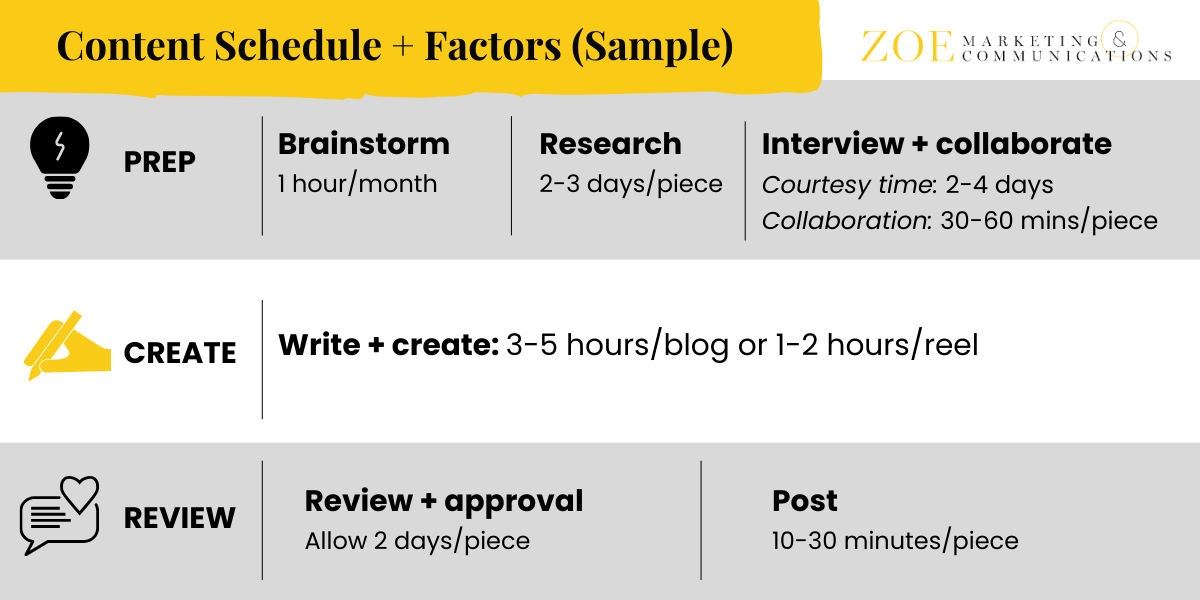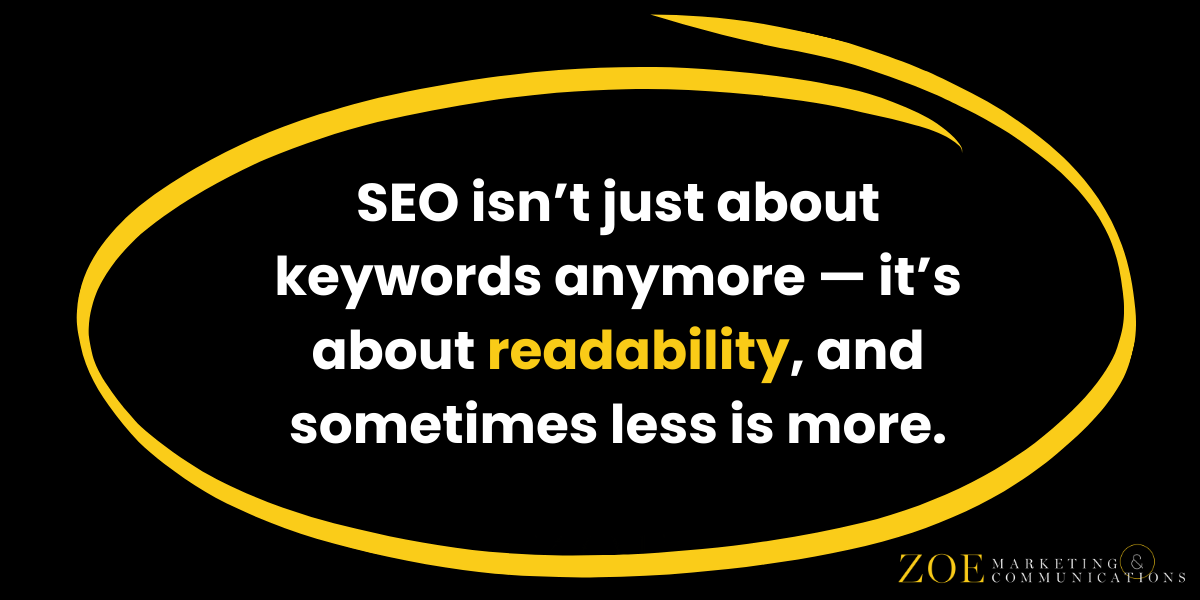Content marketing is powerful — but sprawling. At its core, it’s about:
- Creating and sharing valuable content (blogs, videos, podcasts, etc.)
- Engaging a clearly defined audience with helpful, relevant insights
With 20 years of journalism and marketing writing experience, I’ve seen how effective content builds expertise and trust. But success requires more than just posting.
Here at Zoe Marketing & Communications, we help businesses like yours develop smart content plans that attract and convert.
Here’s how to make content marketing work for you — starting with your audience, strategy and optimization.
Free Guide
Download the Sponsored Content Guide
Discover what “spon con” is, the benefits, costs and if it’s right for your company’s digital marketing strategy.
8 key steps to successful content marketing
1. Identify your target audience
Who are you talking to? Start here.
- Analyze customer demographics and behaviors. Use surveys for feedback and study your competition.
- Research pain points and interests (surveys, social listening, Google Analytics).
- Build audience personas with key details like job role, challenges and preferred content types

2. Set clear goals
Content takes time to work, but there are measurable ways to track its progress.
- Identify your priorities. Are you looking for brand awareness? Engagement? Lead generation? A combination?
- Set measurable KPIs. For instance: 10-20% annual web traffic growth, 5-15% more engagement on social media, etc.
3. Develop a content plan
Consistency is key — so a plan is essential to keeping your content and on track.
- Choose relevant themes (e.g., “family budgeting tips” for parents, “how-to guides” for services)
- Assign content creators and editors for quality control. Tap into tools like Grammarly if needed.
- Set a manageable content schedule — factor in research, writing, reviewing and posting.
- Use a variety of formats (blogs, videos, case studies) and channels for distribution (social media, emails, search engine ads).

4. Create that valuable content!
Good content delivers real value to your audience with answers, insights and entertainment.
- Brainstorm ideas with your in-house experts. Interview them or have them write content to increase credibility.
- Do keyword research. Tools like Google Trends or AnswerThePublic help you identify hot topics.
- Keep your content unique and insightful. Speak directly to your audience’s needs.
5. Be mindful of (ever-evolving) SEO
SEO (search engine optimization) ensures your content reaches the people searching for it.
- Use keywords naturally. Google prioritizes readability smooth readability vs. keyword overuse.
- Ensure mobile-friendliness and fast load speeds for higher rankings.
- Include internal and external links to highly relevant content only. Don’t overdo it.

6. Distribute your content
Meet your audience where they are (remember, that’s multiple places!).
- Publish content on your website (WordPress, Squarespace, Wix, etc.)
- Share content via email, social media platforms and digital ads.
- Collaborate with industry partners or influencers to extend your reach.
7. Engage with your audience
Show you care. Thoughtful interactions build relationships and keep people coming back.
- Respond to comments and questions on your content, including social media, blog comments, email replies and direct messages.
- Use calls to action (CTAs) that invite discussion (“share your thoughts,” “what do you think?”).
- Try interactive formats (polls, quizzes, infographics).
8. Measure and refine
Dig into your results to understand what’s working — and adjust what doesn’t.
- Use Google Analytics and social media insights to measure your traffic, engagement and conversions.
- Compare results against goals and optimize underperforming content
- Continuously optimize. Update old content, tweak distribution strategies or try new content formats.
Next steps for building a strong content marketing plan
Content marketing evolves, but the core goal remains: Help your audience first, and the results will follow.
Need expert support? Talk to us. Zoe Marketing & Communications specializes in content writing backed by journalism expertise.
Still exploring? These articles answer key questions:
Kim Kovelle
As Zoe Marketing & Communications’ content manager, Kim Kovelle brings over 20 years of writing and editing experience in metro Detroit. She has strong roots in community journalism and a knack for making complicated topics make more sense.






